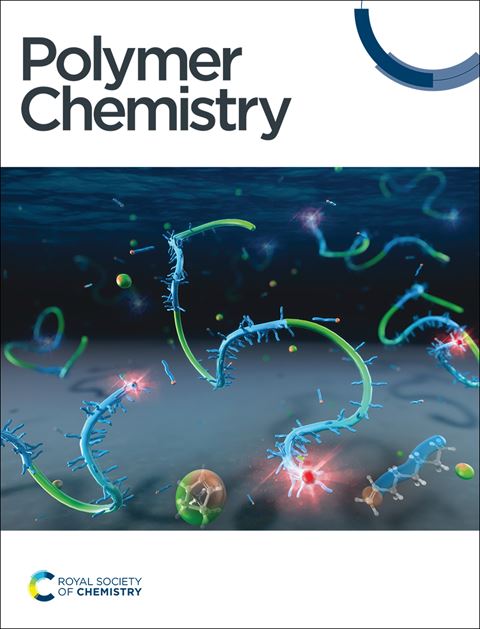BH3·SMe2 addition enables molar mass control via chain stabilization in phosphine–borane dehydropolymerization†
IF 4.1
2区 化学
Q2 POLYMER SCIENCE
引用次数: 0
Abstract
We report the synthesis of high molar mass polyphosphinoboranes using commercially available reagents through thermal dehydropolymerization in the presence of Lewis acids and bases. These dehydropolymerizations produce materials of higher molecular weight compared to the state-of-the-art catalyst, Cp(CO)2FeOTf ([PhPH-BH2]n (), 5 mol% LiOTf, 2 M in 2-MeTHF, 100 °C, 24 h; Mn = 80 000 g mol−1, Đ = 1.64 cf. 5 mol% Cp(CO)2FeOTf, 2 M in toluene, 100 °C, 24 h, Mn = 40 000 g mol−1, Đ = 1.64). We propose a mechanism for the thermal dehydropolymerization of PhPH2·BH3 () with additives. Initially, the phosphine–borane adduct dissociates, yielding borane in situ, which acts as a (pre)catalyst for the dehydrogenation of . Subsequent addition polymerization occurs as described previously, but the addition of Lewis acids and Lewis bases allows for reversible complexation of both termini. Competition between temporary chain capping and termination events results in fewer termination events over time, leading to high molar mass materials. With this mechanism in mind, we were able to show that added BH3·SMe2 allows for control over the molar mass of the resulting materials. These results show that transition-metal catalysts are not needed in the thermal dehydropolymerization of PhPH2·BH3, and offer a new mechanistic insight that may unlock greater control over the dehydropolymerization of main-group substrates.

求助全文
约1分钟内获得全文
求助全文
来源期刊

Polymer Chemistry
POLYMER SCIENCE-
CiteScore
8.60
自引率
8.70%
发文量
535
审稿时长
1.7 months
期刊介绍:
Polymer Chemistry welcomes submissions in all areas of polymer science that have a strong focus on macromolecular chemistry. Manuscripts may cover a broad range of fields, yet no direct application focus is required.
 求助内容:
求助内容: 应助结果提醒方式:
应助结果提醒方式:


